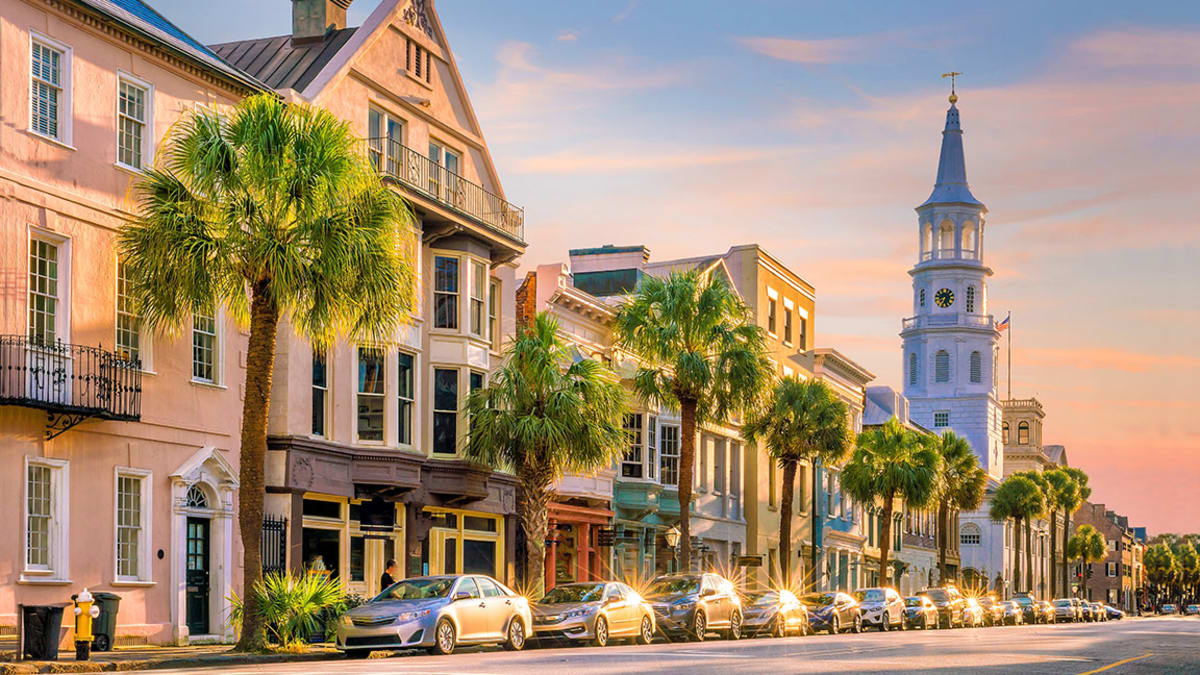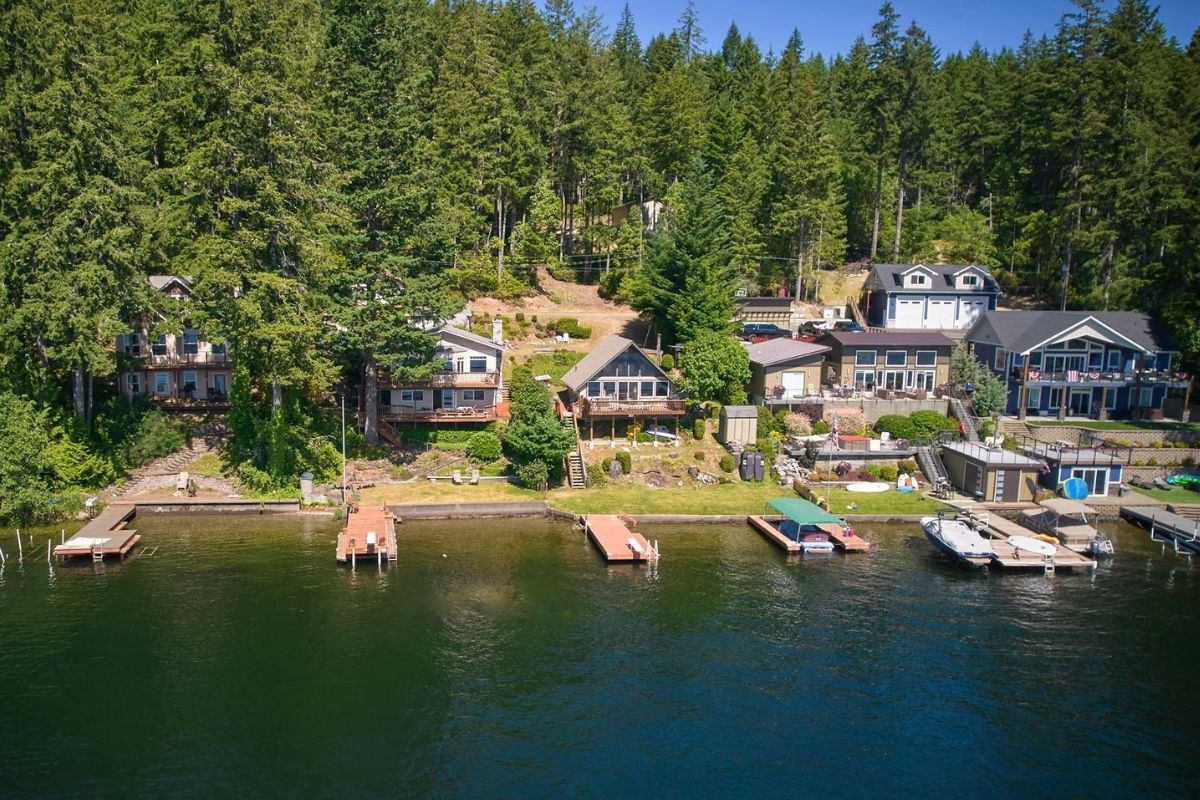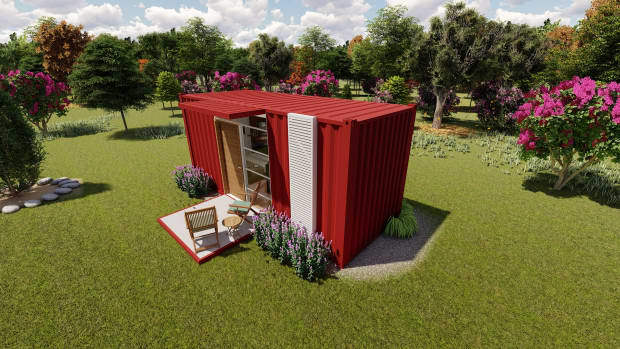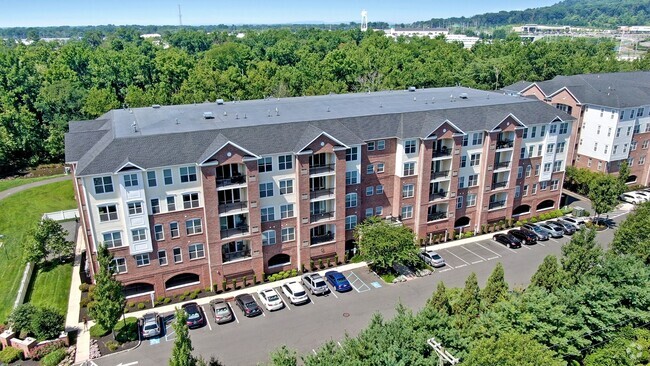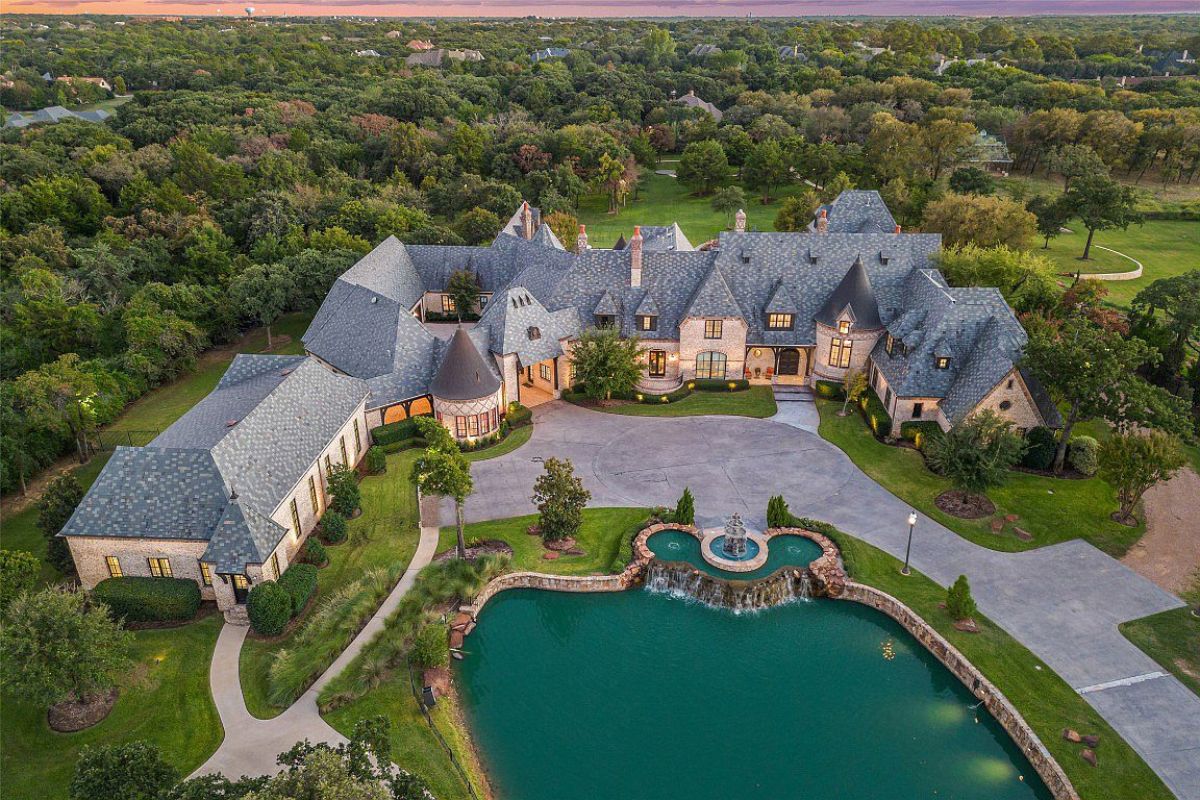In the face of soaring housing costs, finding affordable shelter has become a pressing concern for many. However, amidst this challenge lies a realm of innovative solutions tailored to suit every budget. This article explores eight alternative housing options designed specifically for those on a tight budget.
1. Tiny Houses
Tiny houses are compact dwellings typically ranging from 100 to 400 square feet in size, designed to maximize functionality in a small space. They often feature multi-purpose furniture and clever storage solutions to optimize living areas. Compared to traditional housing, tiny houses are more affordable both in terms of construction costs and ongoing maintenance expenses. They offer financial freedom by requiring smaller mortgages or rent payments and reduced utility bills.

One of the key advantages of tiny houses is their mobility, allowing owners to easily relocate or travel while bringing their home with them. Additionally, tiny houses promote sustainability by consuming fewer resources during construction and maintenance and often utilize eco-friendly technologies like solar panels and composting toilets.
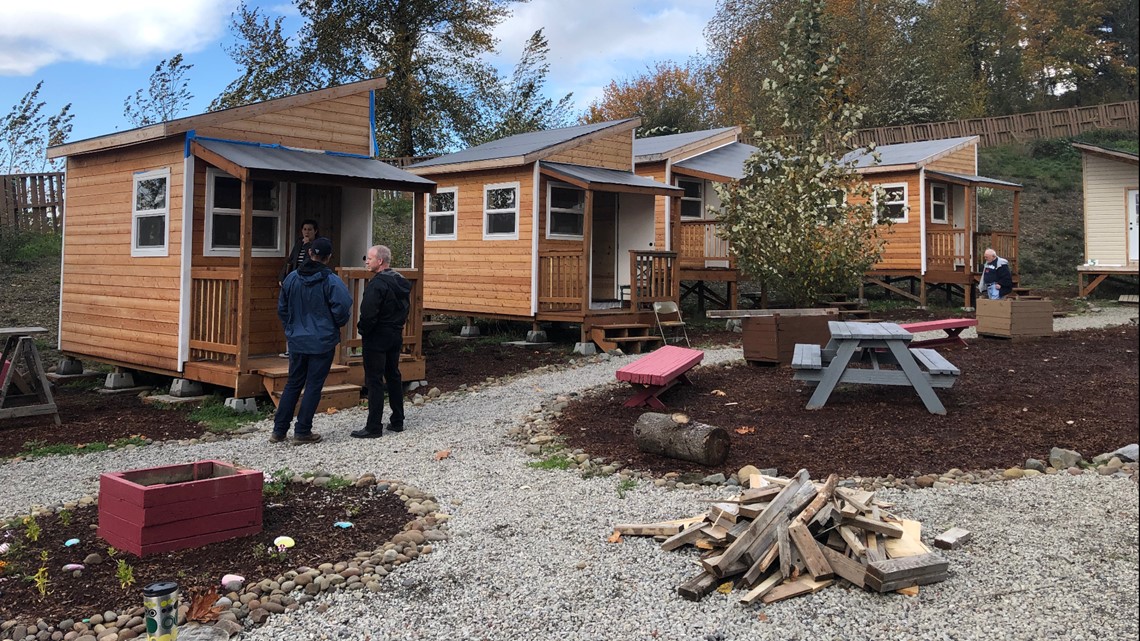
Successful tiny house communities have emerged worldwide, such as the Pocket Neighborhood in Washington and the Tiny House Village in Portland. These communities foster a sense of belonging, promote shared resources, and enable residents to live simpler, more intentional lifestyles while still enjoying community amenities and support networks.
2. Shipping Container Homes
Shipping container homes involve repurposing steel shipping containers—typically used in international freight transport—as building blocks for housing. By repurposing these containers, individuals can create unique and cost-effective living spaces. The cost-effectiveness stems from the abundance of containers available globally and their relatively low cost compared to traditional building materials.
Design flexibility is a significant advantage of shipping container homes. Containers can be stacked or arranged in various configurations to create custom layouts. Additionally, they offer sustainability benefits by reducing the demand for new construction materials and repurposing existing resources.
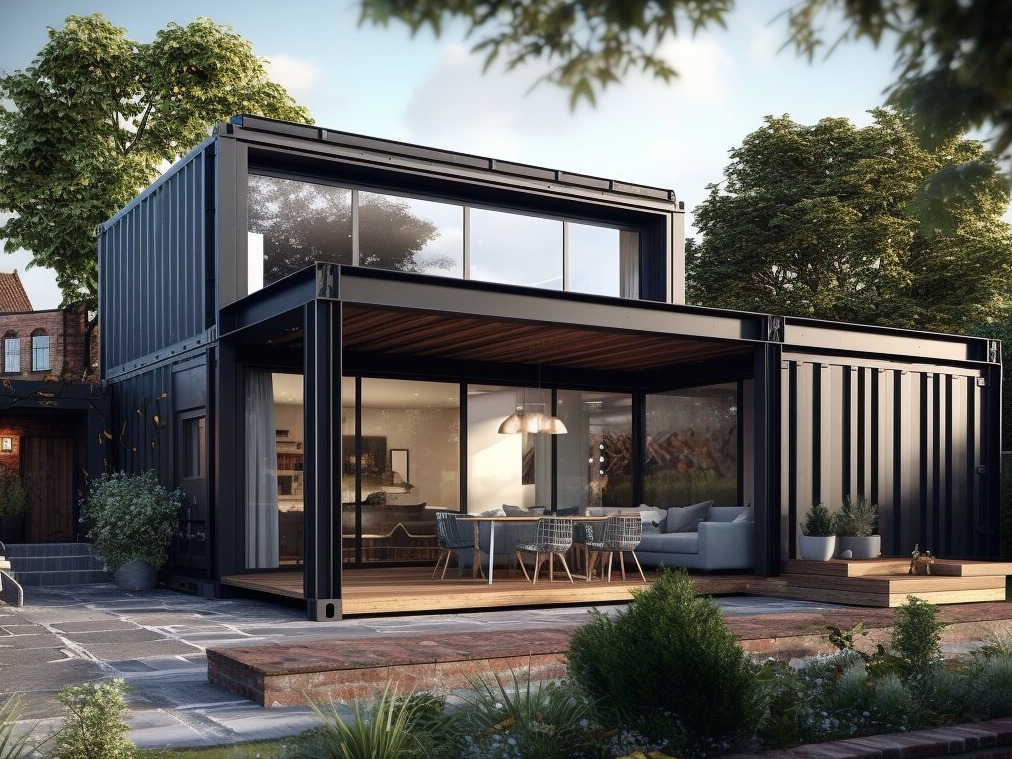
However, challenges exist in the implementation of shipping container homes. Proper insulation is crucial to regulate temperature and prevent condensation inside the containers. Obtaining permits for container homes can also be challenging due to building code regulations and zoning restrictions. Additionally, modifications may be required to ensure structural integrity and compliance with safety standards.
Despite these challenges, shipping container homes offer a creative and sustainable solution to housing needs, appealing to those seeking affordability, versatility, and eco-friendliness in their dwellings.
3. Prefabricated Homes
A.K.A. prefab homes or modular homes, are structures built off-site in controlled factory environments and then transported to the final location for assembly. The construction process involves manufacturing standardized sections or modules that are later assembled on-site, often resembling traditional stick-built homes but with greater efficiency and precision.
Prefab homes offer significant cost advantages over traditional construction methods due to streamlined manufacturing processes, bulk material purchasing, and reduced labor costs. Additionally, their controlled factory environment minimizes waste and construction delays, further contributing to cost savings.
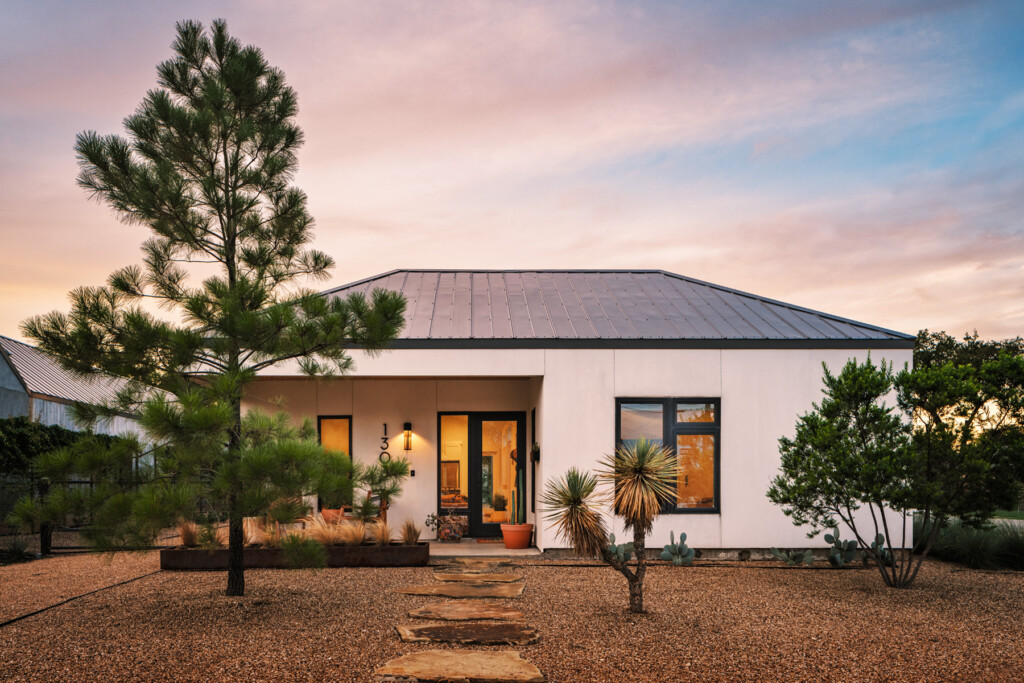
Customization options for prefab homes are extensive, allowing homeowners to choose from various floor plans, finishes, and architectural styles. Furthermore, the assembly of prefab homes is typically faster than traditional construction, as modules can be manufactured concurrently while site preparation work is underway, leading to quicker occupancy.
Notable companies in the prefab housing industry include Blu Homes, Unity Homes, and Honomobo, each offering innovative designs and sustainable building practices. Notable projects include the L.A. Eco-Village in California and the Wikkelhouse in the Netherlands, showcasing the versatility and potential of prefabricated housing solutions.
4. Co-Housing
Co-housing is a collaborative living arrangement where individuals or families reside in private homes within a shared community space. The principles of co-housing emphasize participatory decision-making, shared responsibilities, and fostering a strong sense of community among residents. Each household typically has their own living quarters, while common facilities like kitchens, dining areas, gardens, and recreational spaces are shared.

By pooling resources and sharing facilities, co-housing communities reduce costs for individual members while promoting sustainability through efficient land and resource utilization. Social benefits include increased social interaction, support networks, and a sense of belonging, fostering a more connected and fulfilling lifestyle.
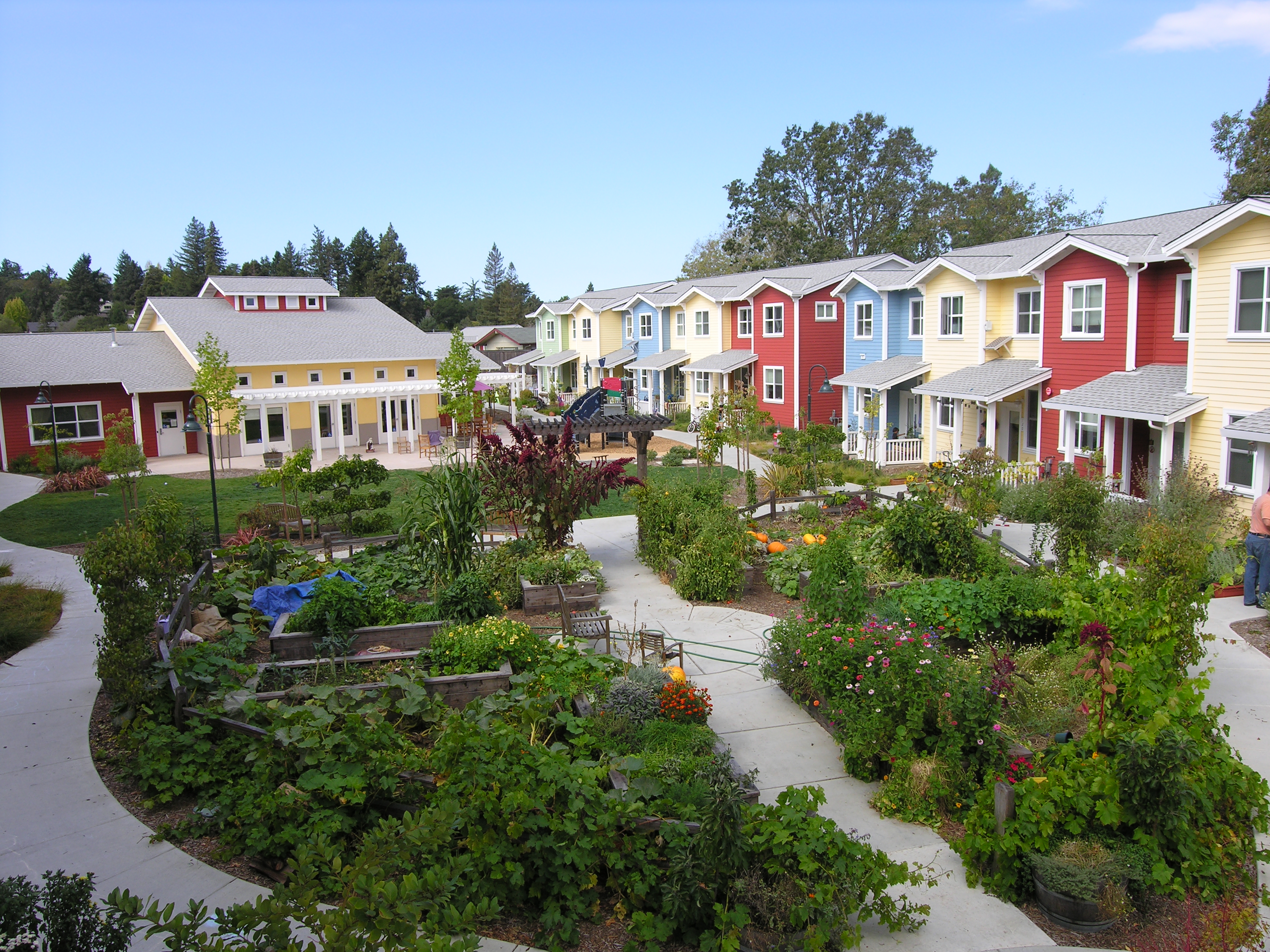
For those interested in joining or starting a co-housing project, networking with existing communities, attending co-housing events or workshops, and utilizing online platforms dedicated to co-housing can be helpful. Collaborating with like-minded individuals to identify shared values, goals, and visions for the community is essential. Additionally, consulting with legal and financial experts to navigate the complexities of property ownership, zoning regulations, and financing options can facilitate the successful establishment of a co-housing project.
Related: Living Together, Apart: Will Co-Living Worth It?
5. Earthbag Construction
Earthbag construction is a sustainable building method that involves filling sturdy bags, typically made of polypropylene or burlap, with natural materials like soil, sand, or gravel, and stacking them in layers to create walls. These bags are compacted to form solid, load-bearing structures.
One of the key advantages of earthbag construction is its affordability. The materials used are often inexpensive and readily available, making it an attractive option for those with limited financial resources. Additionally, the construction process is relatively simple and can be undertaken with minimal specialized skills or equipment, further reducing costs.

Earthbag homes are highly sustainable due to their use of natural materials and minimal environmental impact. They require fewer resources compared to conventional construction methods, such as bricks or concrete, and can often utilize locally sourced materials, reducing transportation emissions.
Moreover, earthbag walls possess excellent thermal mass properties, helping to regulate indoor temperatures and reduce energy consumption for heating and cooling.

Successful examples of earthbag homes can be found worldwide, including the Cal-Earth Institute's SuperAdobe homes in California, USA, and various earthbag villages in countries like Nepal, India, and Iran. These projects demonstrate the feasibility and effectiveness of earthbag construction in providing affordable, environmentally friendly housing solutions.
6. “Van Life”
Converted van or RV living, also known as "van life," is a lifestyle trend where individuals or families choose to reside in modified vans or recreational vehicles (RVs) rather than traditional brick-and-mortar homes. This trend has gained popularity due to its affordability, mobility, and freedom of lifestyle.
Compared to traditional housing, van or RV living offers significant cost savings. Owners bypass mortgage or rent payments and often spend less on utilities and maintenance. Additionally, the compact living space encourages minimalistic living, reducing the need for excess belongings.
:max_bytes(150000):strip_icc()/van-conversion-emsvanlife-1-503041faa243408887c37988fea1949a.jpeg)
Mobility is a key appeal of van life, allowing individuals to travel and explore while bringing their home with them. This lifestyle offers a sense of freedom and adventure, with the flexibility to change locations frequently or stay in one place for extended periods.
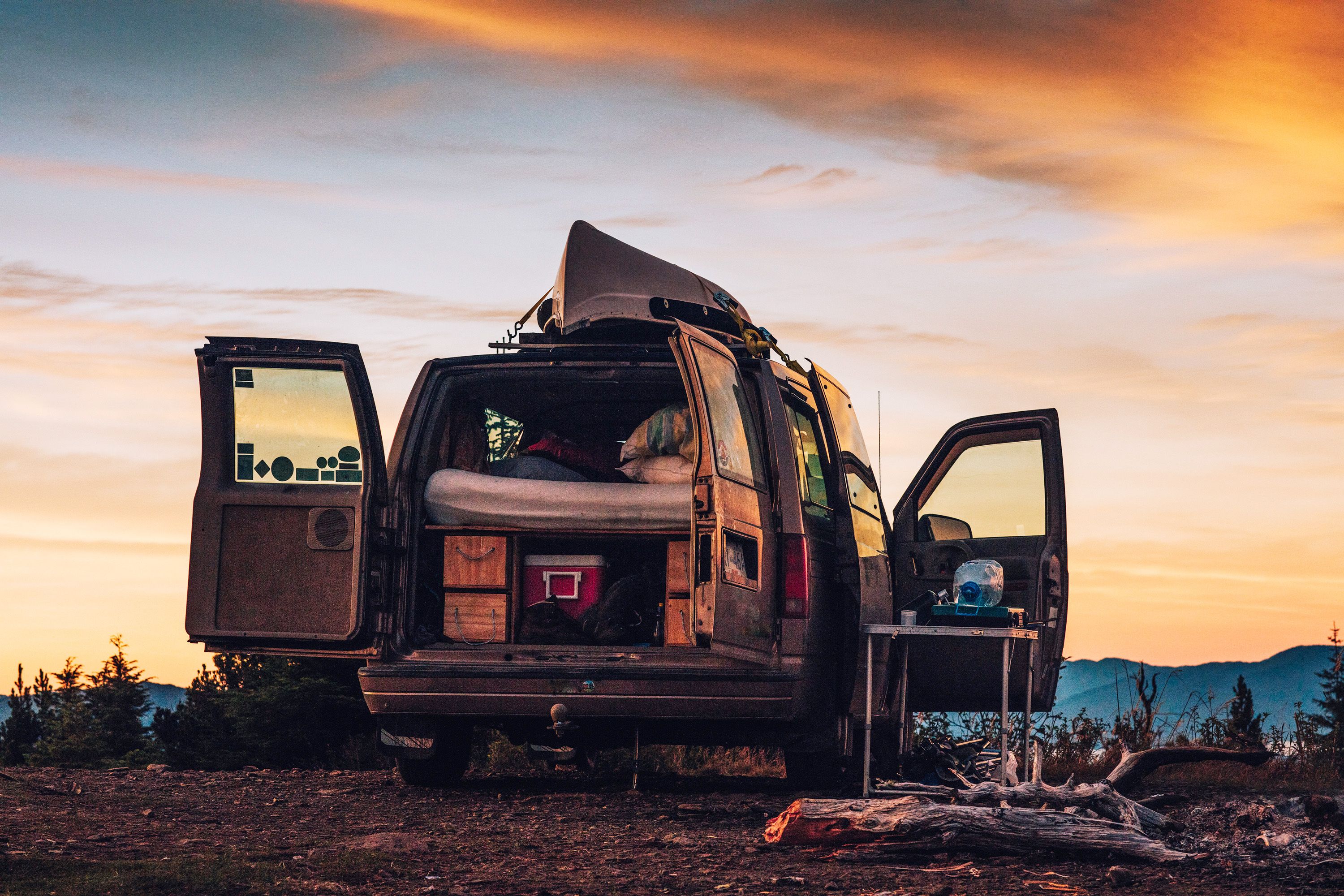
Practical tips for outfitting and living in a van or RV include maximizing storage space, installing solar panels for off-grid power, and prioritizing functionality and comfort in the design. It's also essential to plan for basic amenities like water storage, cooking facilities, and bathroom arrangements to ensure a comfortable living experience on the road.
7. Straw bale construction
Straw bale construction is a sustainable building technique that utilizes straw bales as the primary building material for walls. The process involves stacking tightly bound straw bales to form the walls of a structure, which are then typically covered with plaster or stucco for protection and aesthetics.
One of the key benefits of straw bale construction is its exceptional insulation properties. The thick walls provide excellent thermal performance, keeping interiors cool in summer and warm in winter. This energy efficiency can significantly reduce heating and cooling costs over the lifespan of the building.
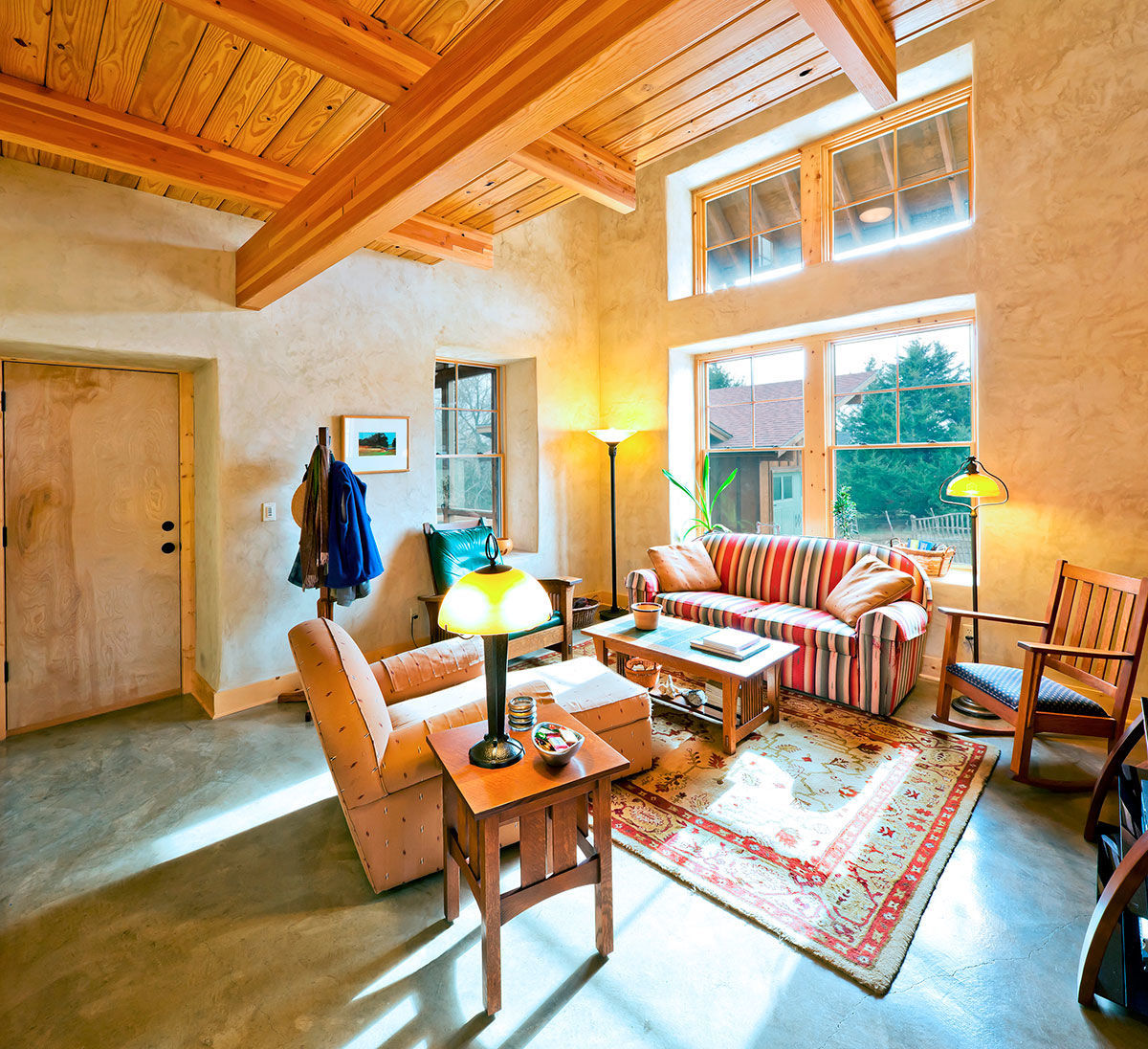
Cost-effectiveness is another advantage of straw bale construction, as straw bales are often inexpensive and readily available, especially in agricultural areas where straw is a byproduct of grain harvesting. Additionally, the construction process is relatively simple and can be undertaken by individuals with minimal specialized skills or equipment.
Challenges and considerations for building with straw bales include moisture management to prevent rot or mold, proper sealing and waterproofing, and compliance with building codes and regulations, which may vary depending on location. Additionally, while straw bale construction is generally fire-resistant, precautions should be taken to mitigate fire risk. Overall, with proper planning and execution, straw bale construction offers a sustainable, energy-efficient, and cost-effective alternative to conventional building methods.
8. Micro – apartment
Micro-apartments are compact residential units typically ranging from 150 to 400 square feet in size, designed to maximize functionality and efficiency within a small footprint. These apartments often feature space-saving design elements such as multi-functional furniture, foldable or retractable fixtures, and clever storage solutions like built-in shelving or under-bed storage.
The key feature of micro-apartments is their affordability, particularly in dense urban areas where housing costs are high. By minimizing square footage, developers can offer these units at lower rental or purchase prices, making urban living more accessible to a wider range of individuals, including students, young professionals, and those seeking a minimalist lifestyle.
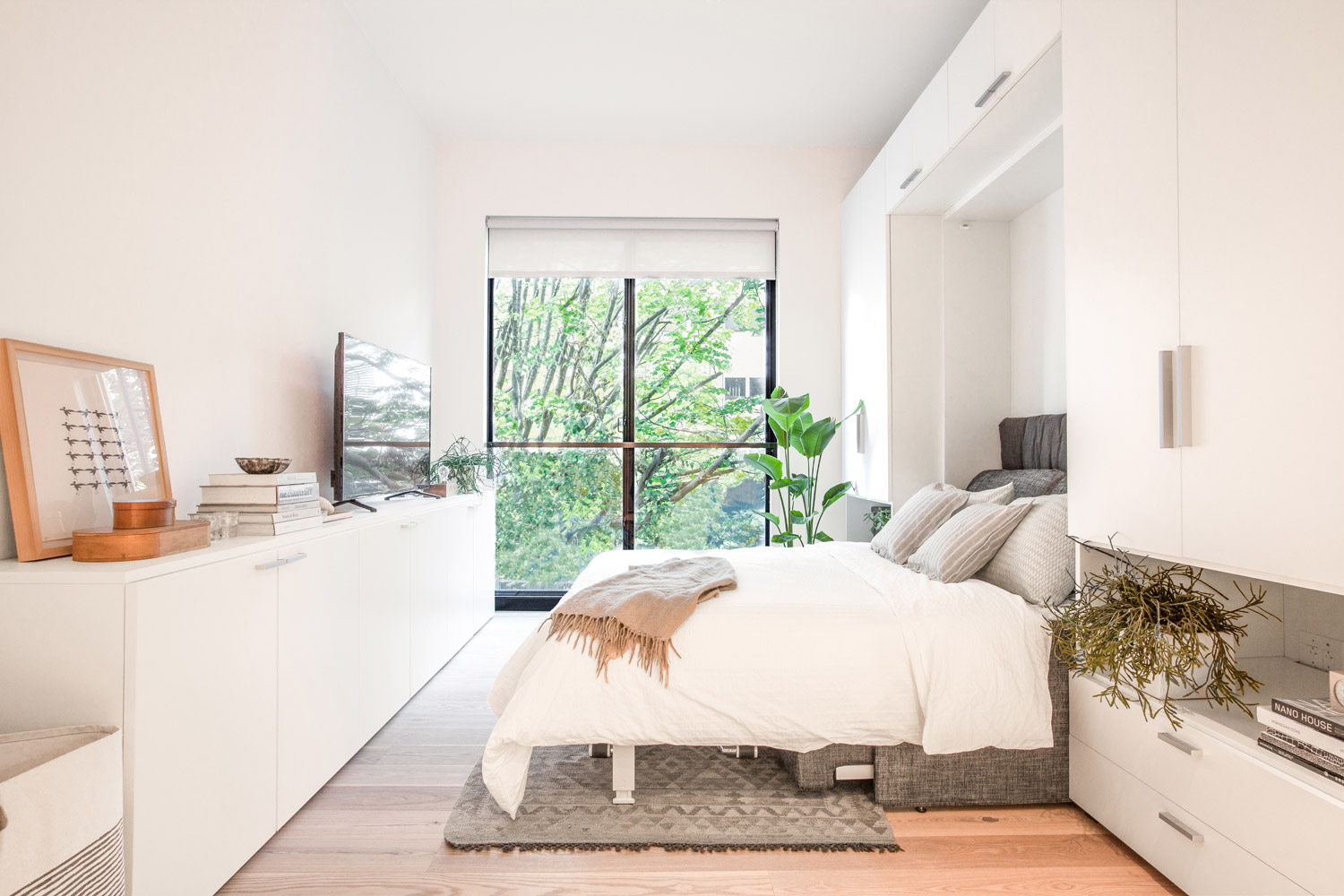
Successful examples of micro-apartment developments can be found in cities worldwide. For instance, projects like Carmel Place in New York City and My Micro NY (formerly known as adAPT NYC) demonstrate innovative approaches to micro-living, providing residents with modern amenities and communal spaces while prioritizing efficient use of space and affordability. These developments showcase the potential of micro-apartments to address the housing needs of urban populations in a sustainable and economically viable manner.
Is living cheaply worth it mentally?
Living cheaply can bring financial peace of mind from savings, but extreme frugality causes high stress for some.
What are the hidden costs of living in these kind of houses?
1. Tiny House
- Mortgage or Rent: $500 - $1,500+
- Utilities: $100 - $300
- Internet and/or Cable: $50 - $100
- Property Taxes (if applicable): Varies greatly by location
- Maintenance and Repairs: $50 - $200
2. Shipping Container Home
- Mortgage or Rent: $800 - $2,000+
- Utilities: $100 - $400
- Internet and/or Cable: $50 - $100
- Property Taxes: Varies greatly by location
- Maintenance and Repairs: $50 - $300
3. Prefabricated Home
- Mortgage or Rent: $600 - $1,500+
- Utilities: $100 - $300
- Internet and/or Cable: $50 - $100
- Property Taxes: Varies greatly by location
- Maintenance and Repairs: $50 - $200
4. Co-Housing Community
- Membership Fees (if applicable): $100 - $500+
- Utilities: $50 - $200 (shared among community members)
- Internet and/or Cable: $20 - $50
- Property Taxes (if applicable): Varies greatly by location
- Maintenance and Repairs: $20 - $100 (shared among community members)
5. Earthbag Home
- Mortgage or Rent: $500 - $1,500+
- Utilities: $100 - $300
- Internet and/or Cable: $50 - $100
- Property Taxes (if applicable): Varies greatly by location
- Maintenance and Repairs: $50 - $200
6. Converted Van or RV
- Fuel: $100 - $500+
- Campground Fees or Parking Fees: $0 - $500+
- Insurance: $50 - $200
- Maintenance and Repairs: $50 - $300
- Internet (if using mobile data): $50 - $100
- Propane (if using for heating or cooking): $20 - $50
7. Straw Bale Home
- Mortgage or Rent: $500 - $1,500+
- Utilities: $100 - $300
- Internet and/or Cable: $50 - $100
- Property Taxes (if applicable): Varies greatly by location
- Maintenance and Repairs: $50 - $200
8. Micro-Apartment
- Rent: $800 - $2,000+
- Utilities: $100 - $300
- Internet and/or Cable: $50 - $100
- Property Taxes (if applicable): Varies greatly by location
- Maintenance and Repairs: $50 - $200
These costs are approximate and can vary significantly depending on factors such as location, size, amenities, and individual preferences.
The Takeaway
From the simplicity of tiny houses to the communal spirit of co-housing, there's a solution for every lifestyle and budget, by embracing innovation and creativity, you can navigate the housing market with confidence, knowing that viable alternatives exist. Let this exploration serve as a reminder: regardless of financial constraints, there's always a way to find a place to call home.
